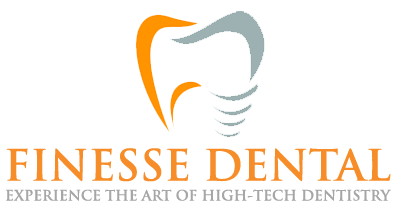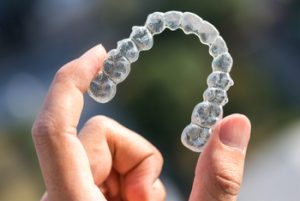Welcome to our deep dive into the transformative world of Invisalign treatment. Invisalign presents a compelling alternative for those seeking straighter teeth without the cumbersome look of traditional metal braces. In this blog, we’ll explore the intricacies of the Invisalign journey, focusing on the dramatic ‘Invisalign before and after’ transformations.
What is Invisalign?
Invisalign, a cutting-edge approach in orthodontics, stands as a beacon of innovation. This treatment has redefined the journey towards achieving a perfect smile, offering a discreet and comfortable alternative to the traditional braces many are accustomed to.
The Mechanics Behind Invisalign Treatment
Advantages Over Traditional Braces
Where Invisalign truly shines is in its advantages over traditional metal braces. The clear aligners are virtually invisible, a feature that particularly appeals to adults and teens who might feel self-conscious about orthodontic treatment. Moreover, the removable nature of these aligners means that maintaining oral hygiene is much easier, significantly reducing the risk of tooth decay – a common complication with traditional braces. Patients can easily brush and floss, ensuring their oral health remains a top priority.
Customisation and Comfort
Each set of aligners is worn for about two weeks before moving on to the next in the series, gradually moving the teeth towards the desired position. This gradual movement enhances comfort and reduces the discomfort often associated with the adjustments of traditional braces. Additionally, since these aligners are custom-made, issues specific to individual dental needs, such as an overlapping upper tooth or lower teeth crowding, are addressed with precision.
A Journey Towards a Healthier Smile
Invisalign isn’t just about aesthetics; it’s a step towards better dental health. Misaligned teeth can lead to complications such as gum disease and tooth decay. By correcting these alignments, Invisalign not only enhances the appearance of your smile but also contributes to the overall health of your mouth.
The treatment aligns teeth in a way that distributes biting pressure evenly, which is crucial for long-term oral health. This can prevent further dental issues and ensures that your smile is as healthy as it is attractive.
Tailored to Individual Needs
What makes Invisalign especially unique is its ability to cater to many dental concerns. Whether adjusting the upper front teeth, correcting a narrow smile, or tackling a deep bite, Invisalign’s customised approach ensures that each individual’s specific dental needs are met. This personalisation is a cornerstone of the Invisalign philosophy, ensuring each patient receives a treatment that’s as unique as their smile.
In essence, Invisalign offers an effective, comfortable, and aesthetically pleasing solution to orthodontic treatment. It’s a testament to modern dental technology, providing a path to straighter teeth and a healthier mouth without the drawbacks of traditional braces. For those considering orthodontic treatment, Invisalign is a modern, sophisticated choice.
Preparing for Invisalign
Your process begins with a consultation, where your dental professional will examine your dental health and discuss whether Invisalign is the right orthodontic treatment for you. They will take digital copies of your teeth to create a personalised treatment plan, targeting areas like the upper left lateral incisor or overlapping upper teeth.
Initial Consultation: Laying the Groundwork
The journey towards a transformed smile with Invisalign begins with an initial consultation. This crucial step involves a thorough examination by a dental professional, who assesses whether Invisalign suits you. It’s a personalised process focused on understanding your specific dental needs, whether aligning upper lateral incisors or correcting an anterior open bite.
Understanding Your Dental Profile
During this stage, the dentist conducts a detailed examination of your teeth. This includes reviewing your dental history, oral health, and specific alignment issues. It’s not just about aesthetics; it’s also about ensuring that your teeth and gums are strong enough to undergo the treatment. The dentist pays close attention to the nuances of your dental structure, such as the position of your upper lateral incisors or any signs of an anterior open bite.
Digital Impressions: A Modern Approach
Gone are the days of uncomfortable dental moulds. Invisalign utilises state-of-the-art digital scanning technology to create a 3D image of your teeth. This digital impression is more comfortable for you and provides a highly accurate map of your teeth. The precision of this technology is key in planning the treatment, especially when targeting specific teeth, like realigning upper lateral incisors or correcting an anterior open bite.
Crafting a Customised Treatment Plan
Once the digital impressions are taken, your dentist will develop a customised treatment plan. This plan outlines the step-by-step process of how your teeth will move and how long the process will take. Using advanced software, your dentist can even show you how your teeth will adjust during the treatment, giving you a glimpse of your future smile.
Addressing Specific Concerns
Each patient’s needs are unique, as is each Invisalign treatment plan. If you have concerns like misaligned upper lateral incisors or an anterior open bite, your treatment plan will include specific strategies to address these issues. The aim is to ensure that every aspect of your dental alignment is considered for an optimal outcome.
Educating the Patient
A significant part of the preparation phase involves educating you about the treatment process. This includes discussing how to care for your aligners, the importance of wearing them consistently, and what to expect during treatment. It’s an interactive process where you can ask questions and express concerns.
The Invisalign Treatment Process
You’ll receive a series of aligners to wear throughout your Invisalign treatment. Each set is designed to make slight adjustments to the alignment of your teeth. This includes moving front teeth, correcting lower teeth crowding, and aligning upper anterior teeth. Regular check-ups will monitor progress and ensure that the patients have their lower teeth treated properly.
Embarking on the Journey: Aligner Fitting
The Invisalign treatment process is a journey that begins with the fitting of your first set of aligners. These are crafted based on the digital impressions taken during your initial consultation. The experienced team at your dental clinic ensures that these aligners fit perfectly, focusing on comfort and effectiveness. This precision is crucial, especially when aligning areas like the top or lower front teeth.
Progressing Through the Aligners
Regular Check-Ins: Monitoring Your Progress
Throughout your Invisalign journey, regular appointments with your dentist are essential. These check-ins allow the experienced team to monitor your progress and make any necessary adjustments to the treatment plan. It’s also an opportunity to discuss any concerns or queries about the process. These sessions are vital in ensuring that your treatment is on track and that you’re comfortable and confident every step of the way.
The Role of Compliance in Treatment Success
A key factor in the success of your Invisalign treatment is your commitment to wearing the aligners as prescribed. This typically means having them on for 20 to 22 hours daily, only removing them for eating, drinking, and oral hygiene practices. Your dedication is crucial in achieving the desired outcome within the projected time frame.
Visualising the Transformation: The Gallery of Invisalign
One of the most motivating aspects for many patients is seeing the ‘Gallery of Invisalign’ – a collection of before and after images showcasing the transformative results achieved by others. These images not only act as a testament to the effectiveness of Invisalign but also provide inspiration and reassurance about the potential results of your own treatment.
Caring for Your Aligners
Proper care of your aligners is another integral part of the treatment process. This includes regular cleaning to prevent staining and odour, ensuring they remain virtually invisible. Your dental team will guide the best practices for aligner maintenance, contributing to your treatment’s overall success and hygiene.
Before and After: Real-Life Transformations
The most exciting part of Invisalign treatment is witnessing the dramatic changes in your smile. The before and after results can be astonishing, from narrow smiles to deep bites. Our gallery of Invisalign transformations showcases various cases, including those with severe lower crowding and misaligned upper front teeth.
Pros and Cons of Invisalign
Invisalign offers many advantages over traditional braces, such as improved comfort and easier oral hygiene. However, it requires discipline to wear the aligners consistently. Also, while Invisalign can correct issues like an upper lateral incisor misalignment, it may not be suitable for more complex orthodontic cases.
Pros of Invisalign
Aesthetically Pleasing
One of the most lauded benefits of Invisalign is its near-invisibility, making it an ideal choice for those self-conscious about the appearance of usual metal braces. This feature allows for discreet treatment, which is particularly appealing to adults and teenagers.
Enhanced Comfort
Invisalign aligners are known for their comfort. Unlike the brackets and wires of traditional braces, which can irritate, Invisalign’s smooth, plastic aligners are custom-made to adjust snugly over your teeth, reducing discomfort.
Improved Oral Hygiene
With Invisalign, maintaining oral hygiene is simpler compared to traditional braces. The removability of the aligners means you can brush and floss your teeth as usual, thereby reducing the risk of tooth decay and gum disease associated with fixed braces.
Convenience and Flexibility
The removable nature of Invisalign aligners offers convenience, especially regarding eating and drinking. You can enjoy your favourite foods without the restrictions often imposed by traditional braces.
Predictable Treatment and Results
Invisalign treatment involves advanced planning with 3D imaging technology, which allows for a more predictable and structured treatment plan. This technology helps in visualising the result even before the treatment begins.
Challenges of Invisalign
Requires Discipline
The success of Invisalign treatment largely depends on the wearer’s commitment to keeping the aligners in for the recommended 20-22 hours per day. This level of discipline is crucial and may be challenging for some, especially younger patients.
Possible Discomfort from Tooth Movement
While Invisalign is generally more ideal than traditional braces, moving teeth can still cause discomfort, particularly when switching to a new set of aligners.
Not Suitable for All Orthodontic Issues
Invisalign may not be the right treatment option for more complex orthodontic issues. Cases requiring significant teeth or jaw alignment movement might necessitate traditional braces or other orthodontic treatments.
Responsibility of Aligner Care
Caring for and not losing the aligners falls entirely on the patient. Since they are removable, there’s a risk of misplacing them, which can disrupt the treatment process and potentially incur additional replacement costs.
Initial Speech Adjustment
Some people might experience a brief period of adjustment with their speech after first wearing Invisalign aligners. This is typically temporary as the mouth gets accustomed to the aligners.
Frequency of Dental Visits
Although Invisalign aligners don’t require adjustments like traditional braces, regular dental visits are necessary to observe progress and receive new aligners. This could be inconvenient for individuals with busy schedules.
Maintenance Post-Invisalign
After completing your Invisalign treatment, maintaining your new smile is crucial. A fixed retainer might be recommended to prevent teeth from shifting back. Continued attention to oral health, including regular brushing and flossing, is vital.
Maintaining your new smile after completing Invisalign treatment is crucial for ensuring the longevity of your results. This phase is as important as the treatment and involves several key practices.
Retainer Use: Preserving Alignment
Types of Retainers: There are generally two retainers: removable and fixed. Your dentist will recommend the best type for your situation. Removable retainers are similar to Invisalign aligners and are typically worn overnight. Fixed retainers, on the other hand, are adjusted to the back of your teeth and provide constant support.
Duration of Use: Immediately after treatment, you might need to wear your retainer full-time for a certain period. Gradually, this will shift to only wearing it at night. However, long-term or lifelong use may be advised to ensure your teeth stay aligned.
Regular Dental Check-ups and Cleanings
Continued Professional Care: Regular dental visits are important for maintaining oral health post-Invisalign. Your dentist will monitor the stability of your teeth alignment and the condition of your retainer.
Professional Cleaning: Professional cleanings help maintain oral hygiene and avoid issues like gum disease and tooth decay, which can affect the alignment of your teeth.
Ongoing Oral Hygiene
Daily Care Routine: Maintaining a rigorous oral hygiene routine is essential. Brushing regularly, flossing daily, and using an antibacterial mouthwash help keep your teeth and gums healthy.
Dealing with Retainers: If you have a removable retainer, cleaning it regularly is important to prevent bacterial build-up and odour.
Lifestyle Considerations
Mindful Eating Habits: While you can enjoy all foods post-treatment, being mindful of hard and sticky foods can be beneficial, especially if you have a fixed retainer.
Avoiding Bad Habits: Habits like nail-biting, pencil-chewing, or using your teeth as tools can hurt your teeth and affect alignment.
Cost and Insurance Considerations
Invisalign cost varies depending on the intricacy of the case and treatment time. Many dental insurance plans cover a section of the cost, similar to traditional braces. It’s important to discuss financing options with your dental provider.
Conclusion
Invisalign offers a modern solution to achieving straighter teeth and improving your smile’s aesthetics and functionality, whether addressing issues like upper teeth crowding or a deep bite. Invisalign’s before and after results are a testament to its effectiveness.
The success of your Invisalign treatment is a collaboration between you and your dental team, requiring commitment, patience, and dedication to following through with the recommended care regimen. The journey is as rewarding as it is transformative, and the outcome is a smile that you can wear proudly.
Your Next Step: If you’re ready to take the first step towards a perfect smile with Invisalign or have any questions about the treatment, we encourage you to contact Finesse Dental. Our team of experienced professionals is dedicated to providing personalised care and guidance throughout your Invisalign journey.
Contact Finesse Dental. To learn more or to schedule a consultation, please get in touch with Finesse Dental at (02) 8806 0790. We support your journey to a healthier, more beautiful smile.
References:
https://www.nidcr.nih.gov/health-info/oral-hygiene
https://www.webmd.com/oral-health/invisible-orthodontic-aligners




